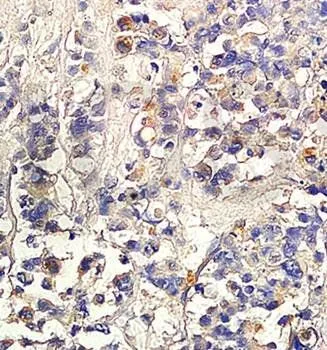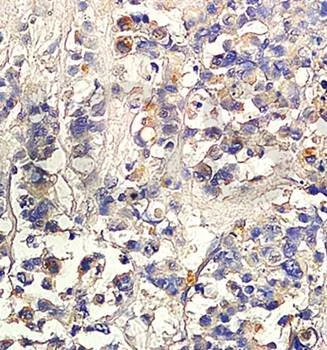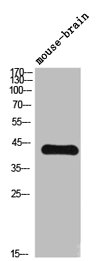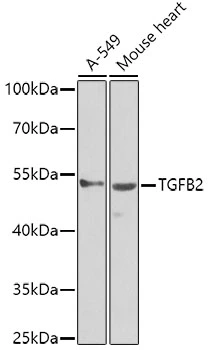
IHC-P analysis of human colon carcinoma tissue using GTX37528 TGF beta 2 antibody.
TGF beta 2 antibody
GTX37528
ApplicationsImmunoHistoChemistry, ImmunoHistoChemistry Paraffin
Product group Antibodies
TargetTGFB2
Overview
- SupplierGeneTex
- Product NameTGF beta 2 antibody
- Delivery Days Customer9
- Application Supplier NoteIHC-P: 1:400-800. *Optimal dilutions/concentrations should be determined by the researcher.Not tested in other applications.
- ApplicationsImmunoHistoChemistry, ImmunoHistoChemistry Paraffin
- CertificationResearch Use Only
- ClonalityPolyclonal
- Concentration0.5 mg/ml
- ConjugateUnconjugated
- Gene ID7042
- Target nameTGFB2
- Target descriptiontransforming growth factor beta 2
- Target synonymsCAEND2, G-TSF, LDS4, TGF-beta2, transforming growth factor beta-2 proprotein, BSC-1 cell growth inhibitor, cetermin, glioblastoma-derived T-cell suppressor factor, polyergin, prepro-transforming growth factor beta-2
- HostRabbit
- IsotypeIgG
- Protein IDP61812
- Protein NameTransforming growth factor beta-2
- Scientific DescriptionThis gene encodes a secreted ligand of the TGF-beta (transforming growth factor-beta) superfamily of proteins. Ligands of this family bind various TGF-beta receptors leading to recruitment and activation of SMAD family transcription factors that regulate gene expression. The encoded preproprotein is proteolytically processed to generate a latency-associated peptide (LAP) and a mature peptide, and is found in either a latent form composed of a mature peptide homodimer, a LAP homodimer, and a latent TGF-beta binding protein, or in an active form consisting solely of the mature peptide homodimer. The mature peptide may also form heterodimers with other TGF-beta family members. Disruption of the TGF-beta/SMAD pathway has been implicated in a variety of human cancers. A chromosomal translocation that includes this gene is associated with Peters anomaly, a congenital defect of the anterior chamber of the eye. Mutations in this gene may be associated with Loeys-Dietz syndrome. This gene encodes multiple isoforms that may undergo similar proteolytic processing. [provided by RefSeq, Aug 2016]
- Storage Instruction-20°C or -80°C,2°C to 8°C
- UNSPSC12352203



![WB analysis of various samples using GTX16335 TGF beta 2 antibody [220ct16.4.3.1]. Lane 1: 293 whole cell lysate Lane 2: K562 whole cell lysate Loading : 20 microg per lane Dilution : 1:500-1:1000](https://www.genetex.com/upload/website/prouct_img/normal/GTX16335/GTX16335_1368_WB_w_23060620_689.webp)

